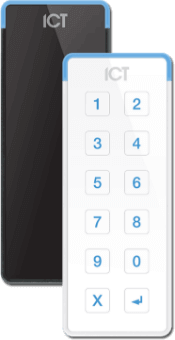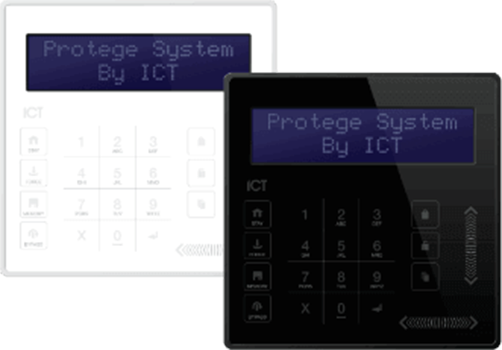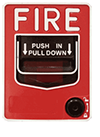Video MGMT System
 Access Control
Access Control
Voice & Data Wiring
 Burglar Alarm
Burglar Alarm
 Fire Alarm
Fire Alarm
Video MGMT System
Voice & Data Wiring
No time to read? Here’s a summary:
With the rise of technology, CCTV (Closed-Circuit Television) has emerged as the go-to solution for business-grade security monitoring. And for good reason.
Numerous studies have demonstrated the powerful deterrent effect of security camera installations. For example, according to a recent Urban Institute study, cameras placed in Baltimore, Chicago, and Washington, D.C., resulted in significant reductions in crime. In downtown Baltimore, 500 security cameras led to a reduction in crime by an average of 30 incidents per month. In Chicago, the installation of over 8,000 cameras resulted in an estimated 12% reduction in crime.
But as much as we value the security provided by video surveillance, there's also a pressing need to respect privacy laws. Enter the concept of "privacy masking" in video surveillance.
Keep on reading, and we’ll unmask this topic to gain valuable insights on CCTV privacy masking and the circumstances that call for it.
Privacy masking, often referred to as "video masking" or "image masking," is a camera feature that obscures or masks specific areas within a video frame to ensure those areas remain private.
There are stringent laws about areas in which electronic monitoring is illegal, especially when overlooking spaces where individuals are considered to have a reasonable expectation of privacy.
In places like restrooms and changing rooms, for example, surveillance camera installation is never OK. Masking ensures that such spaces avoid momentary surveillance even while surrounding areas are being monitored and doors to private areas are open wide.
In short, CCTV masking helps businesses adhere to privacy regulations by covering up or blurring areas that are illegal to surveil.
At the most basic level, an image or video is made up of pixels. Each pixel has a value that represents its color. Masking works by altering the values of specific pixels to hide or obscure a portion of the image.
Types of Pixel Manipulation:
There are two types of pixel manipulation: blackout and blurring.
Blackout: In blackout pixel manipulation, pixel values are changed to black (or another solid color) to cover underlying information.
Blurring: Blurring pixel manipulation involves averaging pixel values with those of their neighbors to create a blurred effect.
For masking to be effective, the system needs to know which region of the image or video to mask. Region selection for masking can be accomplished in several ways, the most common processes falling into the categories of manual selection, automated detection, and layering.
Manual Selection: A user manually draws or selects the region to be masked on the camera system interface during programming.
Automated Detection: Many advanced systems automatically detect and mask regions based on criteria like motion or facial recognition.
Layering: Masking can be implemented as a layer on top of the original image or video in a more advanced system. This layer contains the masking information and is blended with the original content to produce the final masked output. This method ensures that the original content remains unaltered and can be unmasked if needed.
In video surveillance, masking can be applied either continuously to a masked region or based on specific triggers.
Continuous Masking: A specific region of the video is always masked, regardless of the content.
Trigger-based Masking: The masking is only applied when specific conditions are met, such as when motion is detected in a predefined region.
Dynamic Masking: Some advanced systems offer dynamic masking, where the masked region can move within the frame. This is particularly useful for tracking and masking moving objects or individuals in real-time.
Encryption-based Masking: Instead of altering pixel values, some systems encrypt the data in the region to be masked. Only users with the appropriate decryption key can view the masked region. This method ensures high security but requires more computational resources.
When storing masked videos the two main approaches to storing masked videos are permanent masking and reversible masking.
Permanent Masking: The masked video is saved, and the original content in the masked region is lost or overwritten.
Reversible Masking: The original video is stored alongside the masking information, allowing for possible reversion of the video to its unmasked state.
When transmitting or streaming masked videos, the masking should be applied before transmission so that the receiver doesn’t see the masked content.
If you work in or around Connecticut and are looking to bolster your organization's security infrastructure without running afoul of federal and local privacy regulations, you’re in the right place.
Mammoth Security is Connecticut’s one-stop shop for purchasing and installing advanced commercial-grade security systems. Whether it's video surveillance, fire alarms, burglar alarms, access control, or structured cabling, the team at Mammoth Security has you covered.
Click to contact us and fill out the form to set up your free site survey and consultation. We can answer more of your questions about privacy masking and help you decide whether your business or organization needs privacy masking camera features or can benefit them.
NOT COMPLETELY SURE?
860-748-4292In CCTV, privacy masking refers to a camera feature that obscures or masks specific areas within a video frame, ensuring those areas remain private and are not recorded or monitored.
Privacy masking benefits businesses by respecting privacy rights, adhering to stringent privacy laws, and reducing storage needs by masking irrelevant areas.
Pixel manipulation in privacy masking involves altering the values of specific pixels to hide or obscure a portion of an image or video. The two main types of pixel manipulation are blackout, where pixel values are changed to a solid color, and blurring, where pixel values are averaged with neighboring pixels to create a blurred effect.
Region selection for privacy masking can be achieved through manual selection (in which a user manually selects the region to be masked), automated detection (in which the system applies criteria like motion or facial recognition to assess masking requirements), and layering (in which masking is implemented as a layer on top of the original content).
Advanced systems offer dynamic masking, where the masked region can move within the frame to track moving objects. Encryption-based masking encrypts the data in the masked region, ensuring high security but requiring an appropriate decryption key for viewing.
Encryption-based masking enhances security by encrypting the data in the region to be masked. Only users with the appropriate decryption key can view the content, ensuring high security.
Permanent masking saves the masked video, overwriting or losing the original content in the masked region. Reversible masking stores the original video alongside the masking information, allowing for the possibility of reverting the video to its unmasked state.
Privacy masking helps businesses adhere to stringent privacy laws by blocking out areas that are illegal to surveil.
Trigger-based masking in video surveillance is applied when specific conditions are met, such as when motion is detected in a predefined region.
In layering, masking is implemented as a layer on top of the original image or video. This method ensures that the original content remains unaltered and can be unmasked if needed.
Some advanced CCTV systems offer dynamic masking, where the masked region can move within the frame, making it particularly useful for tracking and masking moving objects or individuals in real-time.
By masking irrelevant areas in CCTV footage, only essential content is recorded, leading to saving storage space.